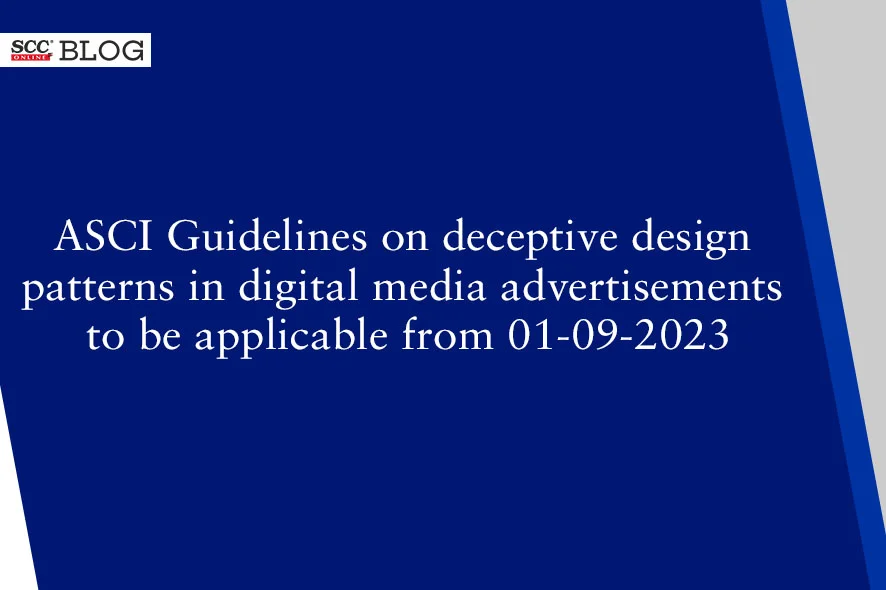The Advertising Standards Council of India (‘ASCI’) had published self-regulatory guidelines for Online Deceptive Design Patterns in Advertising (‘ASCI Guidelines’) to address the issue of deceptive design patterns prevailing in online advertising. These guidelines will come into effect from 01-09-2023.
As per the preamble of the guidelines, Online Deceptive Design Patterns commonly known as “Dark Patterns” is an umbrella term referring to a wide variety of practices commonly found in online user interfaces that lead consumers to make choices that often are not in their best interests.
As per the OECD Committee on Consumer Policy, “dark commercial patterns are business practices employing elements of digital choice architecture, in online user interfaces, that subvert or impair consumer autonomy, decision-making or choice. They often deceive, coerce or manipulate consumers and are likely to cause direct or indirect consumer detriment in various ways, though it may be difficult or impossible to measure such detriment in many instances.”1 Dark Patterns share one or more end-goals, for example getting consumers to purchase, purchase more of, or continue to purchase, a good or service that they would otherwise not purchase or purchase in lesser quantity; to spend more money on a purchase or time on a service than desired; or to give up more personal data than desired, with the ultimate purpose of increasing business revenue.
ACSI code requires ads to be honest, and not abuse the trust or lack of expertise of the consumer, thus, to ensure that advertisements do not breach the code, the following guidelines are to be applied to digital advertising:
-
Drip Pricing
Drip pricing refers to a practice whereby elements of the prices are not revealed upfront, and the total price is only revealed at the very end of the buying process or post-confirmation of purchase. This creates ambiguity around the final price as well as prevents easy price comparisons. Hence, incomplete price representations upfront would be considered misleading.
Example: A consumer orders a snack from an online food delivery platform where the price of Rs. 100 is shown, but the final amount payable comes to Rs. 175 as it additionally includes taxes, delivery fees, platform convenience fees and other such charges. If such charges are common for all or most consumers, the Quoted prices in advertisements and e-commerce sites must include non-optional taxes, duties, fees and charges that apply to all or most buyers, to prevent drip pricing.
-
Bait and Switch
When an ad or an element in the ad directly or indirectly implies one outcome based on the consumer’s action, but instead serves an alternative outcome, the same would be considered misleading.
Examples:
-
A consumer selecting a product offered at a certain price but is thereafter only able to access the same product at a higher price.
-
Offering an attractive product and later revealing that it is out of stock, offering an alternative product.
-
Changing the meaning of key symbols to mean the opposite. For example, an X on the top right corner of the ad, instead of closing an app, may open the app, or do the very action that the user was trying to avoid. This would be deemed to mislead the consumer.
-
False Urgency
Stating or implying that quantities of a particular product or service are more limited than they would amount to misleading consumers.
-
Disguised Ads:
An advertisement that is of a similar format as editorial or organic content must clearly disclose that it is an ad.
Examples: Influencer posts, paid reviews, and ads placed in a manner to appear like editorial content.
1. https://www.ascionline.in/wp-content/uploads/2023/05/Guidelines-for-Online-Deceptive-Design-Patterns-in-Advertising.pdf







